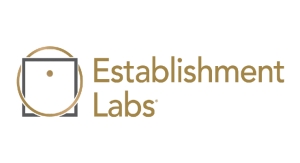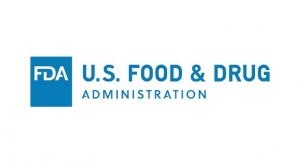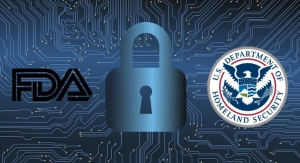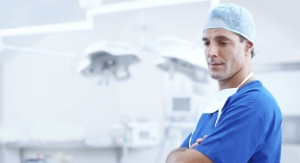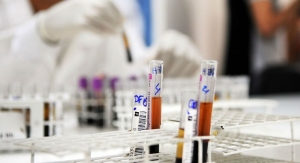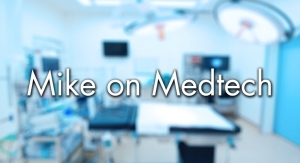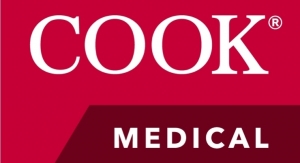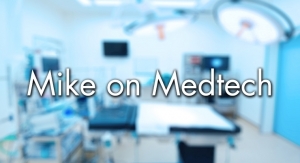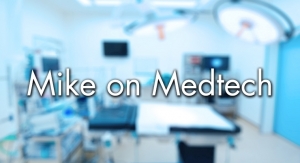Scott Gottlieb M.D., Commissioner; Jeff Shuren M.D., Director of the Center for Devices and Radiological Health, U.S. Food and Drug Administration11.21.18
In April of this year, the FDA released its Medical Device Safety Action Plan: Protecting Patients, Promoting Public Health, which described recent actions we’ve taken to enhance device safety and outlined our vision for how the agency can build on these initiatives to further assure the safety and effectiveness of medical devices. We continue to modernize our approach to device safety. After carefully considering public feedback, we’ll be announcing in a series of updates several important new actions that will help the FDA continue to enhance our nationwide post-market surveillance system; address new safety concerns that emerge once a device is on the market; and encourage innovations that lead to safer medical devices.
We’re focusing on several key actions we’re taking to create a more robust medical device safety net for patients through better data. We’re also announcing several new steps related to important health devices that impact women, including surgical mesh for transvaginal surgical repair.
Next week, we’ll announce additional actions aimed at fundamentally modernizing the process for medical device review, particularly as it relates to the 510(k) process.
At the heart of the new actions that we’re taking, we’re announcing that we’re setting an important and ambitious new goal when it comes to device safety: Ensuring that the FDA is consistently first among the world’s regulatory agencies to identify and act upon safety signals related to medical devices.
We also are providing updates on new funding for the National Evaluation System for health Technology (NEST), our launch of pilot studies to demonstrate how NEST would be implemented and our advances in developing a women’s health coordinated registry network to help strengthen NEST.
In thinking about the regulation of medical devices, it’s important to consider the vast and diverse medical device landscape. The FDA regulates more than 190,000 different devices, which are manufactured by more than 18,000 firms in more than 21,000 medical device facilities worldwide. These products provide immense and often life-saving benefits to millions of patients. On average, we approve, clear or grant marketing authorization to approximately 12 new or modified devices every business day after carefully determining—based on valid scientific evidence—that the devices are safe and effective. These decisions take into consideration whether the benefits of the devices outweigh their risks to patients.
Unfortunately, the FDA cannot always know the full extent of the benefits and risks of a device before it reaches the market. Even reasonably-sized premarket trials cannot be expected to reveal everything that could eventually become known about a novel medical device once it’s more widely distributed and used under real-world conditions, in broader patient populations, and by a broader range of clinicians.
Access to robust and timely data, including more extensive and informative post-market data and real-world evidence, is central to empowering the FDA to identify, communicate and act on new or increased medical device safety concerns. Such data serves as the foundation of our commitment to improving our nation’s post-market medical device surveillance. It’s one of the core pillars of our safety plan.
Investing in New Tools, Policies, and Resources to Enhance Post-Market Safety
The goal that we’re establishing—ensuring that the FDA is consistently first among the world’s regulatory agencies to identify and act upon safety signals related to medical devices—is an important milestone. It’s a culmination of steps that the agency has taken in recent years to strengthen and implement new post-market monitoring tools to adequately assess device performance and patient safety in real-time. Indeed, in many cases, we already have been the first to act on or identify and act on safety signals.
But, as we continue to look to the future, we aspire to build on the foundation that we’ve laid in recent years to become “consistently” first. We’re evolving beyond our current post-market surveillance system—which is largely passive and relies on device users to report problems to us, sometimes resulting in underreporting. We’re moving to an active surveillance system that relies on real-world evidence and timely receipt of robust safety information. We have long recognized the systemic weaknesses of the passive system—a challenge faced by other countries—and we prioritized this area for regulatory reform efforts.
In 2012, FDA announced a vision for the medical device program that reflected the importance of safety, by looking to establish a “U.S. post-market surveillance that quickly identifies poorly performing devices, accurately characterizes real-world performance, and facilitates device approval or clearances.”
Soon thereafter, we issued a strategy for establishing a national medical device post-market surveillance system that employs active surveillance. Active medical device surveillance will better protect patients by continuously generating, accessing, and evaluating large data sets on device performance and clinical outcomes associated with device use in routine clinical practice. It also improves the FDA’s ability to link adverse events with specific devices, so we can act quickly with manufacturers and healthcare providers to make timelier, evidence-based decisions to mitigate device problems and keep patients safe.
Implementing a national surveillance system would not be possible without the FDA’s establishment in recent years of a unique device identification (UDI) system, in which medical devices are marked on their labels with a unique code that can be used to track the device through its distribution and use in patients. These identifiers are stored in a public database, which now contains more than 1.5 million device records, that enables patients and health care providers to download information about their devices. Patient registries also utilize UDIs to help quickly identify safety signals tracked to specific devices.
We’ve also taken steps to advance the use of real-world evidence (RWE) in pre- and post-market decision-making. We believe that including the device identifier in electronic data more broadly, including in insurance claims, will advance FDA’s efforts to leverage real-world data to support the development of more effective post-market surveillance tools. A key element of implementing this strategy is the multi-stakeholder effort to establish the new national system for gathering real-world evidence (NEST). Based on our early activities, we have evidence that NEST will help improve the breadth and quality of RWE we can access and analyze.
We’re now committing new resources to NEST to advance a more rapid build-out of this system.
In some cases, we already are receiving clinical evidence more quickly and more efficiently and are answering post-market questions we would not have been able to easily address in the past. NEST also will provide another source of information for medical device manufacturers to assess the safety and effectiveness of their devices and continue to develop innovative improvements. Importantly, it will help health care providers and patients stay better informed about the evolving benefit-risk profile of devices on the market and enable them to make more informed decisions.
NEST leverages a wide range of data systems that could provide crucial information on medical devices, including data from patient registries, Medicare claims, and electronic medical records. Moreover, it was designed from the very beginning to serve as a resource for the entire community, which is why the Governing Board for NEST’s independently-run public-private coordinating center (called NESTcc) is comprised of members representing the key community stakeholders, including patients and providers.
Delivering on the goal to be first in the world to consistently identify and act on medical device safety signals will rest in part on our ability to fully leverage NEST as an active surveillance and evaluation system that complements the approaches currently in use by more quickly detecting emerging safety signals through active surveillance, supporting timely evaluation of these signals to determine if they represent a real risk to patients, and ensuring timely responses to new and increased risks.
We’ve certainly made strides: FDA provided the seed funding that helped establish the NESTcc, and we also secured partial industry funding for NEST as part of the latest Medical Device User Fee Agreement (MDUFA IV) with industry. To date, the NESTcc has entered into agreements this year with 12 organizations that represent more than 195 hospitals and almost 4,000 outpatient clinics with access to more than 495 million patient records—which will all be a part of the early data network.
New Funding for NEST
Despite all of the progress we’ve made and the promise of this system, NEST will require considerably more funding to fully meet its tremendous potential. The FDA will continue to put what resources we have into building out this system. That’s why, in September, we allocated an additional $3 million in agency funding to the NESTcc. This new funding for NEST, which was provided in addition to the annual funding allocated by the latest user fee agreement, will allow us to continue supporting demonstration projects, described below, for building out active surveillance capabilities.
However, for NEST to become fully functional and fulfill its promise of helping to ensure safer devices for patients, additional resources are essential. Indeed, funding is the principal barrier to establishing this system. To bridge the gap, the President’s budget for fiscal year 2019 includes a request for an additional $46 million for CDRH to support NEST, as well as to conduct FDA-sponsored post-market studies that address device-specific safety concerns. If this funding becomes a reality, the FDA will continue to work with stakeholders to help make NEST financially self-sustaining in the long term.
Advancing Device Safety Pilots Using NEST
As we work to secure additional funding, we continue to do whatever possible to build out NEST now.
With the FDA’s support, the NESTcc announced this month that it has initiated eight test case demonstration projects using real-world data. Some examples of projects to conduct post-market surveillance include testing the feasibility of using patient registries and claims data to evaluate the safety and effectiveness of total joint and knee replacement surgeries; to compare the safety and effectiveness of different tissue closure techniques (staples, sutures, skin adhesives) from wounds resulting from trauma or surgery; and to evaluate the safety of intervertebral body fusion devices used to treat spinal conditions like degenerative disc disease.
The promise of NEST is clear: real-time device safety information means better outcomes for patients who depend on devices to improve their health. We’re committed to making the promise a reality by prioritizing NEST’s development and ensuring it’s set up for long-term success to advance public health.
Focusing on Women’s Health
As we implement our active surveillance system to quickly detect new safety signals, we will continue our efforts to strengthen our Coordinated Registry Networks (CRN), which link different real-world data sources to generate clinical evidence about medical products used by patients. In particular, we’re focusing on addressing clinical questions on device therapies that are unique to women, such as treatment of uterine fibroids, pelvic floor disorder, female sterilization, and long-acting reversible contraception. The FDA partnered with the American College of Obstetricians and Gynecologists, the American Urogynecologic Society, the National Library of Medicine and others on this, known as the Women’s Health Technologies CRN, or WHT-CRN. We targeted part of the additional $3 million in funding for NESTcc for this effort.
Over the past six months, notable successes of the WHT-CRN include the development and international harmonization of core data sets in four clinical areas—stress urinary incontinence (SUI), pelvic floor disorders, uterine fibroids, and long-acting, reversible contraception and sterilization therapies. We’re tapping into anonymous payer claims data from New York State and data from the New York Clinical Data Research Network to enable us to answer crucial clinical questions, such as the long-term safety and efficacy of urogynecologic mesh for stress urinary incontinence. The next step is to develop an implementation guide for the participating registries so they can develop tools to efficiently extract clinical data from electronic health records.
Additionally, to help inform the health care community’s understanding of how the WHT-CRN could ultimately be more broadly applied, the FDA has initiated surveillance pilot projects using payer claims data and will undertake a pilot assessing the feasibility of using electronic health records (EHR) to study mesh.
Similar to NEST, the WHT-CRN holds great promise as we advance new tools and approaches for using data to improve outcomes for women and ensure they have access to safe, effective and innovative devices.
Breast Implants
Likewise, a separate effort that launched in September 2018 in collaboration with multiple stakeholders is the National Breast Implant Registry (NBIR). This registry provides a platform for evaluating real-world data on the safety and performance of breast implants that will greatly contribute to helping us evaluate data from providers regarding their patients with implants. We’ve heard from patients who are concerned that their implants may be linked to other health conditions, like chronic fatigue, cognitive issues, and muscle pain.
While the FDA does not have evidence suggesting breast implants are associated with these conditions, information from NBIR may help us identify risk factors for complications, such as a patient’s own medical history, the specific type of operation, the type of implant used, and concomitant use of other medical devices. Greater information-gathering from a registry like NBIR will add helpful information to the FDA’s already extensive review of our own medical device reports, review of medical literature, assessment of post-approval studies and meetings with patients regarding breast implant safety.
The FDA is also continuing to monitor and communicate about known risks associated with breast implants, such as capsular contracture, implant rupture and breast implant-associated anaplastic large cell lymphoma (BIA-ALCL). In addition, we’ll hold an advisory committee meeting in 2019 to ensure that patients and health care providers continue to have accurate, scientifically sound information about breast implant safety and effectiveness, and to promote public dialogue on the issue.
“Vaginal Rejuvenation” Devices
We’re also continuing to monitor a specific set of energy-based devices in which certain manufacturers may be inappropriately marketing their devices to women. This past summer, we warned women and health care providers about a growing number of manufacturers marketing “vaginal rejuvenation” devices to treat conditions and symptoms related to menopause, urinary incontinence or sexual function—even though the FDA has not received evidence that these devices are safe or effective to use for these indications. We’re announcing that after reaching out to the seven manufacturers marketing their devices for unapproved or uncleared uses, all of them have made significant changes to their websites to remove claims associated with vaginal rejuvenation and other unapproved treatments. Our efforts to address these safety concerns is part of our broader work to improve our analysis of data and generation of RWE concerning the safety and effectiveness of health technologies in clinical areas that are unique to women.
Gynecologic Surgical Mesh
In another important action, we’re announcing that the FDA will convene an advisory committee meeting on February 12, 2019 to discuss the safety and effectiveness of surgical mesh intended for transvaginal pelvic organ prolapse (POP) repair. Two years ago, we took action to strengthen our regulation of mesh by issuing an order to upclassify surgical mesh for transvaginal POP repair. FDA required manufacturers to submit premarket approval (PMA) applications and obtain approval in order to remain on the market. As a result, manufacturers ceased their marketing of surgical mesh intended for the highest risk indication, transvaginal posterior POP repair. Only three surgical mesh products intended for transvaginal repair of anterior compartment prolapse remain on the market while the FDA evaluates the data submitted in their PMAs.
The advisory committee meeting will seek expert opinion regarding the available evidence of the benefits and risks of mesh for transvaginal POP repair and provide an opportunity for the FDA to hear directly from the public, including patients, about their experiences, and consider additional regulatory actions.
Next Steps
Ensuring the safety of medical devices on an ongoing basis requires a multi-layered effort. One element of this system is a vigilant post-market surveillance system for quick identification and evaluation of new or increased safety concerns. Robust oversight of safety also requires, timely public communication about safety issues and effective interventions to address concerns. The FDA also must foster innovation that spurs the development of safer, more effective technologies and assures timely patient access.
Doing all of these things, and more will enable us to improve the safety, health, and quality of life of patients and enable decision-making based on the best available evidence about medical devices.
We look forward to providing updates soon about our progress in these other areas. This includes seeking new authority for faster and more efficient imposition of post-market safety mitigations and efforts to further assure the safety and effectiveness of devices reviewed under the 510(k) process. We believe all of these steps will continue to strengthen our policies and processes in order to best protect patients.
We’re focusing on several key actions we’re taking to create a more robust medical device safety net for patients through better data. We’re also announcing several new steps related to important health devices that impact women, including surgical mesh for transvaginal surgical repair.
Next week, we’ll announce additional actions aimed at fundamentally modernizing the process for medical device review, particularly as it relates to the 510(k) process.
At the heart of the new actions that we’re taking, we’re announcing that we’re setting an important and ambitious new goal when it comes to device safety: Ensuring that the FDA is consistently first among the world’s regulatory agencies to identify and act upon safety signals related to medical devices.
We also are providing updates on new funding for the National Evaluation System for health Technology (NEST), our launch of pilot studies to demonstrate how NEST would be implemented and our advances in developing a women’s health coordinated registry network to help strengthen NEST.
In thinking about the regulation of medical devices, it’s important to consider the vast and diverse medical device landscape. The FDA regulates more than 190,000 different devices, which are manufactured by more than 18,000 firms in more than 21,000 medical device facilities worldwide. These products provide immense and often life-saving benefits to millions of patients. On average, we approve, clear or grant marketing authorization to approximately 12 new or modified devices every business day after carefully determining—based on valid scientific evidence—that the devices are safe and effective. These decisions take into consideration whether the benefits of the devices outweigh their risks to patients.
Unfortunately, the FDA cannot always know the full extent of the benefits and risks of a device before it reaches the market. Even reasonably-sized premarket trials cannot be expected to reveal everything that could eventually become known about a novel medical device once it’s more widely distributed and used under real-world conditions, in broader patient populations, and by a broader range of clinicians.
Access to robust and timely data, including more extensive and informative post-market data and real-world evidence, is central to empowering the FDA to identify, communicate and act on new or increased medical device safety concerns. Such data serves as the foundation of our commitment to improving our nation’s post-market medical device surveillance. It’s one of the core pillars of our safety plan.
Investing in New Tools, Policies, and Resources to Enhance Post-Market Safety
The goal that we’re establishing—ensuring that the FDA is consistently first among the world’s regulatory agencies to identify and act upon safety signals related to medical devices—is an important milestone. It’s a culmination of steps that the agency has taken in recent years to strengthen and implement new post-market monitoring tools to adequately assess device performance and patient safety in real-time. Indeed, in many cases, we already have been the first to act on or identify and act on safety signals.
But, as we continue to look to the future, we aspire to build on the foundation that we’ve laid in recent years to become “consistently” first. We’re evolving beyond our current post-market surveillance system—which is largely passive and relies on device users to report problems to us, sometimes resulting in underreporting. We’re moving to an active surveillance system that relies on real-world evidence and timely receipt of robust safety information. We have long recognized the systemic weaknesses of the passive system—a challenge faced by other countries—and we prioritized this area for regulatory reform efforts.
In 2012, FDA announced a vision for the medical device program that reflected the importance of safety, by looking to establish a “U.S. post-market surveillance that quickly identifies poorly performing devices, accurately characterizes real-world performance, and facilitates device approval or clearances.”
Soon thereafter, we issued a strategy for establishing a national medical device post-market surveillance system that employs active surveillance. Active medical device surveillance will better protect patients by continuously generating, accessing, and evaluating large data sets on device performance and clinical outcomes associated with device use in routine clinical practice. It also improves the FDA’s ability to link adverse events with specific devices, so we can act quickly with manufacturers and healthcare providers to make timelier, evidence-based decisions to mitigate device problems and keep patients safe.
Implementing a national surveillance system would not be possible without the FDA’s establishment in recent years of a unique device identification (UDI) system, in which medical devices are marked on their labels with a unique code that can be used to track the device through its distribution and use in patients. These identifiers are stored in a public database, which now contains more than 1.5 million device records, that enables patients and health care providers to download information about their devices. Patient registries also utilize UDIs to help quickly identify safety signals tracked to specific devices.
We’ve also taken steps to advance the use of real-world evidence (RWE) in pre- and post-market decision-making. We believe that including the device identifier in electronic data more broadly, including in insurance claims, will advance FDA’s efforts to leverage real-world data to support the development of more effective post-market surveillance tools. A key element of implementing this strategy is the multi-stakeholder effort to establish the new national system for gathering real-world evidence (NEST). Based on our early activities, we have evidence that NEST will help improve the breadth and quality of RWE we can access and analyze.
We’re now committing new resources to NEST to advance a more rapid build-out of this system.
In some cases, we already are receiving clinical evidence more quickly and more efficiently and are answering post-market questions we would not have been able to easily address in the past. NEST also will provide another source of information for medical device manufacturers to assess the safety and effectiveness of their devices and continue to develop innovative improvements. Importantly, it will help health care providers and patients stay better informed about the evolving benefit-risk profile of devices on the market and enable them to make more informed decisions.
NEST leverages a wide range of data systems that could provide crucial information on medical devices, including data from patient registries, Medicare claims, and electronic medical records. Moreover, it was designed from the very beginning to serve as a resource for the entire community, which is why the Governing Board for NEST’s independently-run public-private coordinating center (called NESTcc) is comprised of members representing the key community stakeholders, including patients and providers.
Delivering on the goal to be first in the world to consistently identify and act on medical device safety signals will rest in part on our ability to fully leverage NEST as an active surveillance and evaluation system that complements the approaches currently in use by more quickly detecting emerging safety signals through active surveillance, supporting timely evaluation of these signals to determine if they represent a real risk to patients, and ensuring timely responses to new and increased risks.
We’ve certainly made strides: FDA provided the seed funding that helped establish the NESTcc, and we also secured partial industry funding for NEST as part of the latest Medical Device User Fee Agreement (MDUFA IV) with industry. To date, the NESTcc has entered into agreements this year with 12 organizations that represent more than 195 hospitals and almost 4,000 outpatient clinics with access to more than 495 million patient records—which will all be a part of the early data network.
New Funding for NEST
Despite all of the progress we’ve made and the promise of this system, NEST will require considerably more funding to fully meet its tremendous potential. The FDA will continue to put what resources we have into building out this system. That’s why, in September, we allocated an additional $3 million in agency funding to the NESTcc. This new funding for NEST, which was provided in addition to the annual funding allocated by the latest user fee agreement, will allow us to continue supporting demonstration projects, described below, for building out active surveillance capabilities.
However, for NEST to become fully functional and fulfill its promise of helping to ensure safer devices for patients, additional resources are essential. Indeed, funding is the principal barrier to establishing this system. To bridge the gap, the President’s budget for fiscal year 2019 includes a request for an additional $46 million for CDRH to support NEST, as well as to conduct FDA-sponsored post-market studies that address device-specific safety concerns. If this funding becomes a reality, the FDA will continue to work with stakeholders to help make NEST financially self-sustaining in the long term.
Advancing Device Safety Pilots Using NEST
As we work to secure additional funding, we continue to do whatever possible to build out NEST now.
With the FDA’s support, the NESTcc announced this month that it has initiated eight test case demonstration projects using real-world data. Some examples of projects to conduct post-market surveillance include testing the feasibility of using patient registries and claims data to evaluate the safety and effectiveness of total joint and knee replacement surgeries; to compare the safety and effectiveness of different tissue closure techniques (staples, sutures, skin adhesives) from wounds resulting from trauma or surgery; and to evaluate the safety of intervertebral body fusion devices used to treat spinal conditions like degenerative disc disease.
The promise of NEST is clear: real-time device safety information means better outcomes for patients who depend on devices to improve their health. We’re committed to making the promise a reality by prioritizing NEST’s development and ensuring it’s set up for long-term success to advance public health.
Focusing on Women’s Health
As we implement our active surveillance system to quickly detect new safety signals, we will continue our efforts to strengthen our Coordinated Registry Networks (CRN), which link different real-world data sources to generate clinical evidence about medical products used by patients. In particular, we’re focusing on addressing clinical questions on device therapies that are unique to women, such as treatment of uterine fibroids, pelvic floor disorder, female sterilization, and long-acting reversible contraception. The FDA partnered with the American College of Obstetricians and Gynecologists, the American Urogynecologic Society, the National Library of Medicine and others on this, known as the Women’s Health Technologies CRN, or WHT-CRN. We targeted part of the additional $3 million in funding for NESTcc for this effort.
Over the past six months, notable successes of the WHT-CRN include the development and international harmonization of core data sets in four clinical areas—stress urinary incontinence (SUI), pelvic floor disorders, uterine fibroids, and long-acting, reversible contraception and sterilization therapies. We’re tapping into anonymous payer claims data from New York State and data from the New York Clinical Data Research Network to enable us to answer crucial clinical questions, such as the long-term safety and efficacy of urogynecologic mesh for stress urinary incontinence. The next step is to develop an implementation guide for the participating registries so they can develop tools to efficiently extract clinical data from electronic health records.
Additionally, to help inform the health care community’s understanding of how the WHT-CRN could ultimately be more broadly applied, the FDA has initiated surveillance pilot projects using payer claims data and will undertake a pilot assessing the feasibility of using electronic health records (EHR) to study mesh.
Similar to NEST, the WHT-CRN holds great promise as we advance new tools and approaches for using data to improve outcomes for women and ensure they have access to safe, effective and innovative devices.
Breast Implants
Likewise, a separate effort that launched in September 2018 in collaboration with multiple stakeholders is the National Breast Implant Registry (NBIR). This registry provides a platform for evaluating real-world data on the safety and performance of breast implants that will greatly contribute to helping us evaluate data from providers regarding their patients with implants. We’ve heard from patients who are concerned that their implants may be linked to other health conditions, like chronic fatigue, cognitive issues, and muscle pain.
While the FDA does not have evidence suggesting breast implants are associated with these conditions, information from NBIR may help us identify risk factors for complications, such as a patient’s own medical history, the specific type of operation, the type of implant used, and concomitant use of other medical devices. Greater information-gathering from a registry like NBIR will add helpful information to the FDA’s already extensive review of our own medical device reports, review of medical literature, assessment of post-approval studies and meetings with patients regarding breast implant safety.
The FDA is also continuing to monitor and communicate about known risks associated with breast implants, such as capsular contracture, implant rupture and breast implant-associated anaplastic large cell lymphoma (BIA-ALCL). In addition, we’ll hold an advisory committee meeting in 2019 to ensure that patients and health care providers continue to have accurate, scientifically sound information about breast implant safety and effectiveness, and to promote public dialogue on the issue.
“Vaginal Rejuvenation” Devices
We’re also continuing to monitor a specific set of energy-based devices in which certain manufacturers may be inappropriately marketing their devices to women. This past summer, we warned women and health care providers about a growing number of manufacturers marketing “vaginal rejuvenation” devices to treat conditions and symptoms related to menopause, urinary incontinence or sexual function—even though the FDA has not received evidence that these devices are safe or effective to use for these indications. We’re announcing that after reaching out to the seven manufacturers marketing their devices for unapproved or uncleared uses, all of them have made significant changes to their websites to remove claims associated with vaginal rejuvenation and other unapproved treatments. Our efforts to address these safety concerns is part of our broader work to improve our analysis of data and generation of RWE concerning the safety and effectiveness of health technologies in clinical areas that are unique to women.
Gynecologic Surgical Mesh
In another important action, we’re announcing that the FDA will convene an advisory committee meeting on February 12, 2019 to discuss the safety and effectiveness of surgical mesh intended for transvaginal pelvic organ prolapse (POP) repair. Two years ago, we took action to strengthen our regulation of mesh by issuing an order to upclassify surgical mesh for transvaginal POP repair. FDA required manufacturers to submit premarket approval (PMA) applications and obtain approval in order to remain on the market. As a result, manufacturers ceased their marketing of surgical mesh intended for the highest risk indication, transvaginal posterior POP repair. Only three surgical mesh products intended for transvaginal repair of anterior compartment prolapse remain on the market while the FDA evaluates the data submitted in their PMAs.
The advisory committee meeting will seek expert opinion regarding the available evidence of the benefits and risks of mesh for transvaginal POP repair and provide an opportunity for the FDA to hear directly from the public, including patients, about their experiences, and consider additional regulatory actions.
Next Steps
Ensuring the safety of medical devices on an ongoing basis requires a multi-layered effort. One element of this system is a vigilant post-market surveillance system for quick identification and evaluation of new or increased safety concerns. Robust oversight of safety also requires, timely public communication about safety issues and effective interventions to address concerns. The FDA also must foster innovation that spurs the development of safer, more effective technologies and assures timely patient access.
Doing all of these things, and more will enable us to improve the safety, health, and quality of life of patients and enable decision-making based on the best available evidence about medical devices.
We look forward to providing updates soon about our progress in these other areas. This includes seeking new authority for faster and more efficient imposition of post-market safety mitigations and efforts to further assure the safety and effectiveness of devices reviewed under the 510(k) process. We believe all of these steps will continue to strengthen our policies and processes in order to best protect patients.

